India is a land of many climatic regions and different seasons. While some areas experience a very cold winter, others have more moderate weather. Despite temperature differences, certain winter flowering plants can be grown across the country. These beautiful flowers add color and life to any garden during the cold months. Let’s check out how to grow flowers in winter in India.
In winter, the weather gets colder, and temperatures drop. If you want to fill the garden with flowers in the winter season, it is essential to plant the most beautiful flowers that bloom throughout the day and make them beautiful. Winter flowers are available in different colors, sizes, etc. There are many things to consider when growing winter flowering plants in India. First, choosing the varieties that will bloom in your area is critical.
Some plants require particular temperature conditions for flowering, so it’s essential to do your research in advance. Second, remember that these plants need extra care and attention during winter. Water them regularly and protect them from frost or snow damage. With a bit of care, you can enjoy vibrant flowers all winter.
How to grow flowers in winter in India.
How to take care of winter flowering plants in India?
When temperatures start dropping in India, it’s time you start thinking about how to take care of your winter flowering plants. When caring for winter flowering plants, one of the most important things is to water them regularly. While it doesn’t look like they need it, these plants will be affected if they don’t get enough water.
Be sure to check soil and water frequently as needed. Another essential thing to remember is that these plants need more fertilizer during winter. A high-quality fertilizer will help them maintain their color and strength throughout the season. Apply fertilizer as per the instructions on the package. Finally, be sure to deadhead any spent flowers regularly.
This will encourage growth and at the same time prevent the plant from becoming leggy. If you live in a frosty winter, you must take extra care to protect your plants from cold. Move them indoors if possible, or cover them with a cloth or a tarp when frost is expected. Many winter flowering plants benefit from good pruning before the season begins. This helps encourage new growth and ensures that your plants look their best in the spring.
List of winter flowers to grow in India
Aster
The Aster flower is charming and beautiful to look at. It’s easy to grow during the winter using seeds, and Aster flowers also have plenty of colors. If you’re looking for the perfect plant to plant in the winter months, go for it. You can harvest seeds that are dried from Aster blooms and then use them the next time.
In case you missed it: Aster Gardening For Beginners, How To Start, Tips
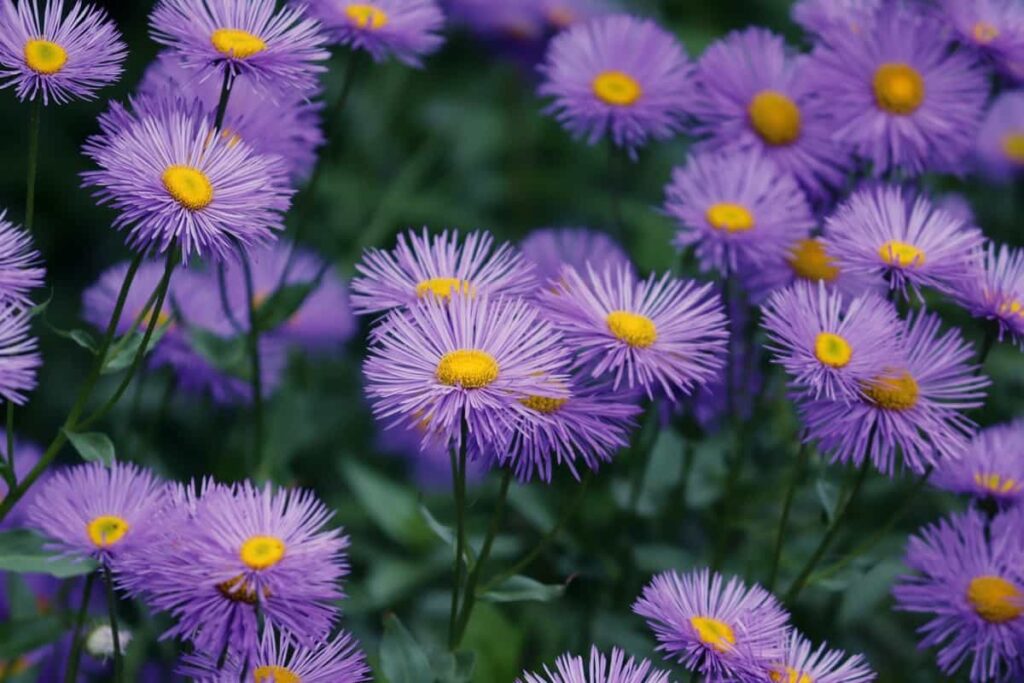
Pansy
Pansy is a winter-blooming plant that can survive even in harsh winters. Their butterfly-shaped flowers are beautiful and available in many colors. These low-growing plants can grow well in the shade, enhancing your garden’s beauty.
Osteospermum
Osteospermums or African Daisies bloom during bright lights. These plants must need at least an inch of water per week to stay hydrated. They tolerate much dryness; however, if not watered regularly, they can grow slowly and go dormant. Sprinkle the seeds over the soil and press them in a little bit, as the Daisies require much light. You should keep the soil and seeds moist until they germinate. Cutting will help them reproduce quickly. Aphids can be a problem, but spraying with pesticides can help solve the problem.
Namesia
If you want your garden to appear multicolored, you should plant a Namesia flower. Namesia flowers are amazing and easy for beginners to grow. The most effective method of propagation is seed sowing. Namesia flowering plants are ideal for use in the winter months in India. This plant needs moist soil and regular sun to produce its flowers. Use organic fertilizer, which is very common, to achieve more effective results from flowering plants.
Cineraria
Cineraria is an indoor plant, and therefore direct sunlight can be quite harmful to it. Therefore, please place it in places with too much indirect light. Make sure the place to plant Cineraria is also cool. Windows facing north or east have a greater cooling effect than those facing south and west.
In case you missed it: 16 Best Outdoor Flowering Plants in India: How to Plant, Grow and Care
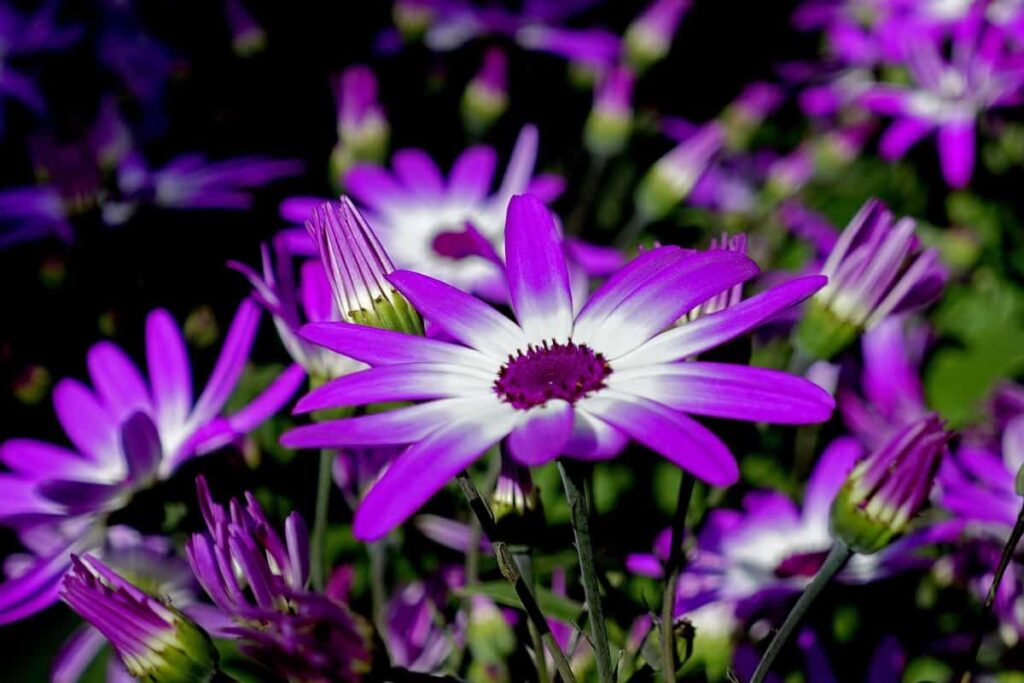
Use smaller pots because compared to larger containers, Cineraria plants bloom better when the roots are bound in them. If there is insufficient light or too much heat, Cineraria plants wilt. It can also cause plants to attract pests such as aphids and whiteflies. Use well-ventilated, loose potting soil to seed.
Calibrachoa
Calibrachoa is one of the best winter plants in India and is also a favorite of gardening lovers. It can be easily grown in the form of a hanging basket. It will grow in a trailing manner, which increases the appeal of the hanging basket. Calibrachoa requires adequate sunlight for 6 to 7 hours. One tip is to cut its branches and leaves so that the branches can grow faster. It can be easily grown by seeds, and that’s why how many people pick this flowering plant to grow.
Alyssum
Sweet Alyssum requires well-drained soil with an adequate amount of moisture to thrive. Plants tolerate various soil conditions and add a splash of color in different settings. The seeds should be started indoors in seed flats in the early spring and transplanted outside after the risk of frost is over.
In case you missed it: 14 Self-Seeding Flowers: Why They are Great for Your Backyard Garden
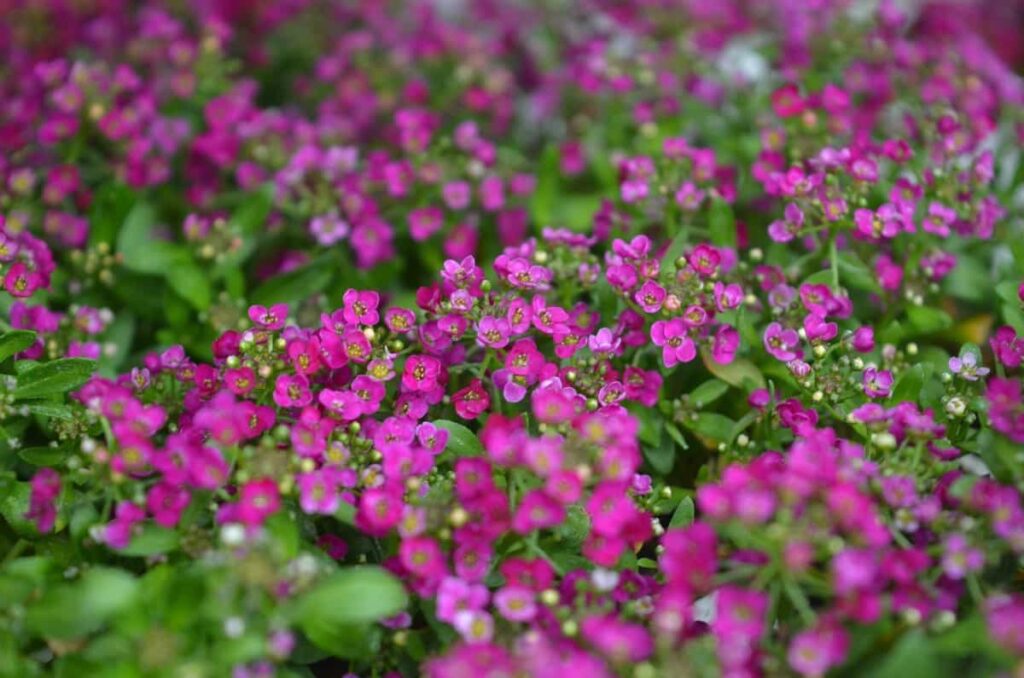
Plant the small seed on the soil surface and keep it moderately moist until it germinates, which takes an average of 15 to 20 days. When plants have several pairs of true leaves and the soil temperature is at least 16°C, transplant them onto a garden bed that has been prepared. Learning to cultivate Alyssum is easy, and a packet of seeds is far less expensive than purchasing bedding plants.
Antirrhinum
Antirrhinum or Snapdragons bloom best in well-drained, moist soil in late spring or early summer temperatures. However, they will tolerate a lightweight shade. Antirrhinum is a pleasant annual plant, absolute to brighten up borders and containers.
Passionflower
Plant your Passionflower vines in full sun to partial shade to keep them healthy and to bloom. In a scorching climate, some of the afternoon shades are appreciated. Passionflowers typically want at least four hours of daylight a day, extra cool temperatures, and some partial color in the hottest areas. Passionflowers can grow as perennials. Passionflowers should immediately be deep-watered once planted.
English Primrose
It is a perennial plant growing in partial shade and moist soil conditions that make it a huge addition to the woodland garden, which blooms from late winter to early spring. Charming clusters of pale-yellow flowers brighten up the bleak winter days.
In case you missed it: How to Grow Marigold Flowers from Seed to Harvest: A Planting Guide for Beginners
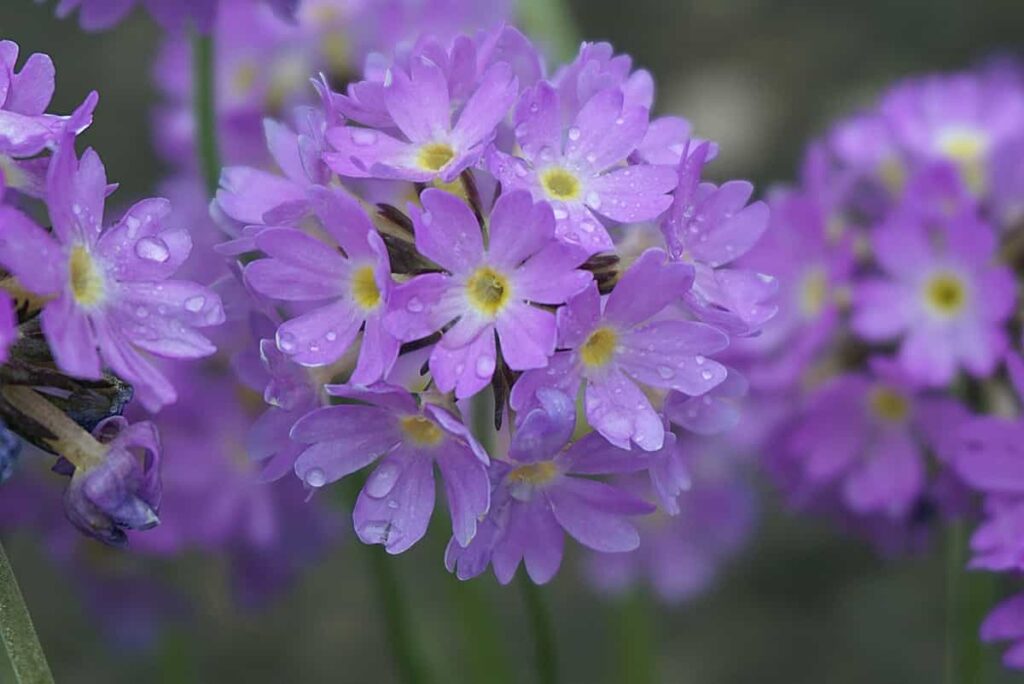
Winter Jasmine
It is a shrub plant type. Shrub vines can be grown as a ground cover or trained to climb. It blooms around late winter and requires full sunlight to partial shade. The slender, willowy branches are attractive and stay green during the winter, adding great charm to the garden.
Gazania
Gazania is a perfect flowering plant for winter. If you grow one of them in your garden, it will soon grow into various plants. It is a tough plant that doesn’t need much attention. It just needs enough light and space to thrive. The more sunlight it gets, the more it blooms. In the absence of sunlight, its flower becomes smaller in size. Add fertilizer to it in liquid form every 15 days for the most effective results.
Dianthus
In addition to the Petunia, the Dianthus flower is the most famous flower planted during winter in India. If the climate is not too hot, it will continue throughout the year. It requires a small amount of water. Too much water can kill this plant. The pot must contain a similar amount of soil, sand, and fertilizer to grow this flowering plant. Dianthus flowering plants need calcium carbonate to help them grow faster, and you can use a fertilizer with calcium carbonate. Many of the fantastic color options offered by Dianthus are pink, white, reddish-white, and red.
Sweet peas
Sweet Peas are a popular flowering plant well suited to grow this winter. It is widely cultivated for its beautiful floral color and refreshing aroma. Early winter is the best time to sow seeds when the soil temperature is 10°C to 21°C, seeds germinate in about 10 to 21 days and bloom in 4 to 5 months after planting.
Geranium
Geranium is a great plant to grow in winter; you need to take good care of it to make it last and continue to bloom until summer. The potting mixture should contain 50% soil, 25% vermicompost, and 25% sand, ensuring proper growth and blooming. Its flower is like a cluster of flowers and requires 5 to 6 hours of sunlight to prepare well. Also, this flowering plant comes in various colors, including white, red, pink, and so on.
In case you missed it: Growing Morning Glory Flowers: How to Plant and Care
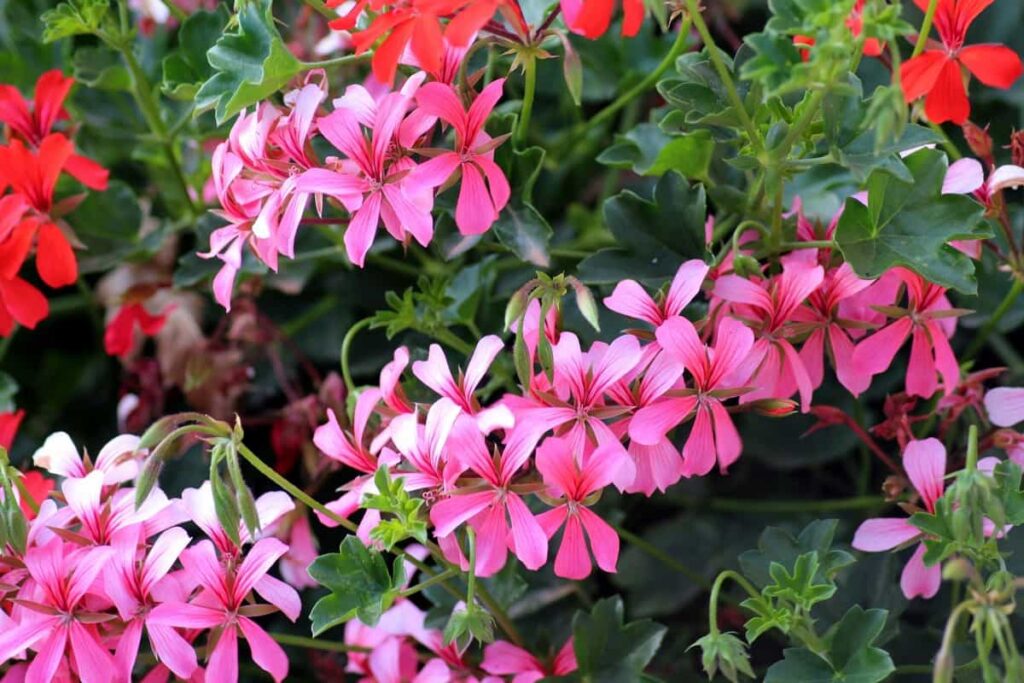
Chrysanthemum
It is believed that the winter period is the ideal time to grow a Chrysanthemum plant. Its flowers bloom well in cold climates. Chrysanthemums can be grown using two methods cutting and seeding. Flowers last for at least one month. If you want to see your garden bloom forever, choose a Chrysanthemum flower plant.
Salvia
Salvia is another of the most beautiful winter flowering plants that grow in India. Salvia flowers are large in height and have charming flower buds. To grow the Salvia flowering plant, seed proliferation is ideal, and you can easily obtain seeds for the Salvia plant near the nursery. When planting, ensure that both vermicompost and soil are delicate and smooth. It has to grow rapidly, and within a month, it becomes about 4 to 5 inches long. Just add organic or liquid fertilizer every 15 days.
Fuchsia
This plant may not be able to withstand the cooling temperature. Fuchsias flowers are splendidly versatile, with joy, and can grow in any fertile, moist, well-drained soil in the sun or partial shade.
Phlox
Phlox is an Indian winter flowering plant with beautiful little flowers. This plant is available in a variety of colors which gives you many options. Flowering plants do not require any care. Its flowers are similar to Vinca. The best way to apply Phlox is to mix the different colors of the seeds into a pot.
Buttercups
Buttercups are perfect for planting in the garden in winter because they can easily survive in cold climates. Buttercup flowers are beautiful and come in different colors, similar to rose flowers. These flowers will make your garden more beautiful and brighter. They can be grown from seeds, roots, or tubers. To get the best result, plant them in well-drained soil when the temperature is around 15°C to 21°C.
In case you missed it: How to Grow Peanuts in Raised Beds: Soil, Propagation, Planting, and Care
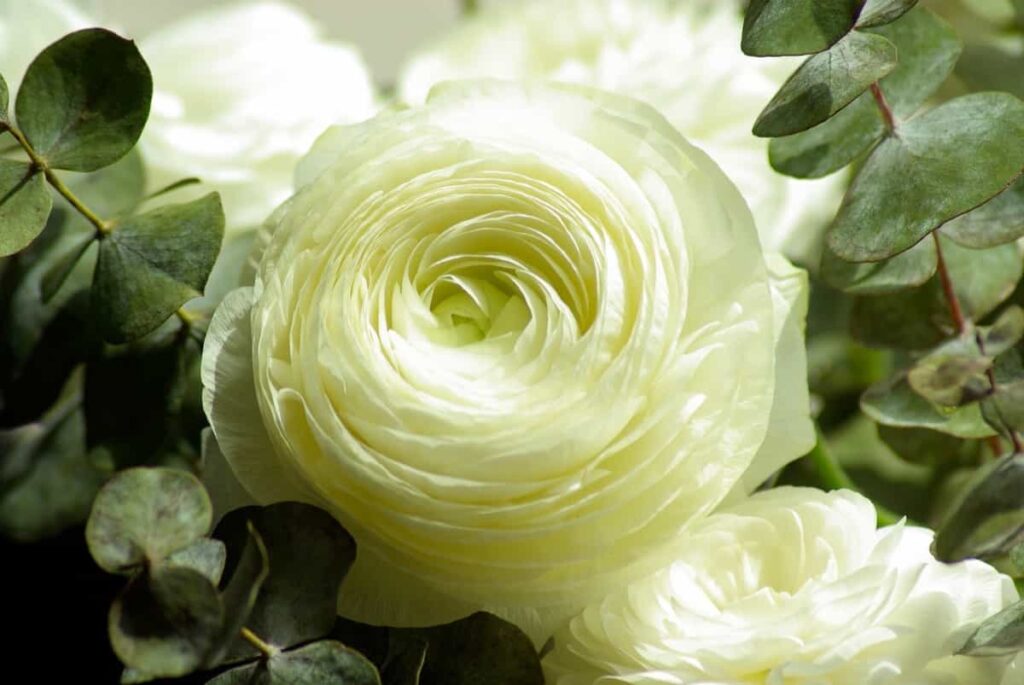
How to plant winter flower seeds?
The ideal temperature for growing winter flowers is 10°C to 25°C. Buy good quality flower seeds and sow about 1 inch deep in the potting mix. You can also sow them in regular soil. But for the best germination rate, you can use 70% vermicompost with 30% sand or cocopeat. Suppose you’re referring to annual winter flowering plants; August-September is the best time to plant them. This is because most of these plants flower between December and February. Annuals are readily available in nurseries during this time.
By planting them in August-September, you can ensure they have enough time to establish themselves before winter. After 15 to 20 days, the seedlings have grown to about 3 to 4 inches. Use 30% organic fertilizer/vermicompost, 20% fine sand, and 50% normal soil for a potting mix. Ensure the pot is at least 6 inches deep so the roots can grow easily.
Conclusion
India has a diverse climate, and the winter season can be harsh in some parts of the country. However, some flowers can withstand cold weather and bloom beautifully during this time. You should consider growing one (or more) of these flowers if you want to add a sprinkle of colors to your garden during winter. You can find a beautiful garden no matter what time of year with some care and attention.
- Broccoli Seed Germination and Selection
- Asparagus Seed Germination and Variety Selection
- Seasonal Flower Gardening: Best Practices for Spring, Summer, Fall, and Winter
- How to Grow Hibiscus from Flower
- Plantation Ideas for Home Decoration: A Beginners Guide
- Flower Garden Designs and Layouts for Beginners
- Planting and Spacing Techniques in Papaya: A Beginner’s Guide
- Growing Gold: Essential Techniques for Planting Pineapples
- How to Make Kalanchoe Plant Bushy: Home Remedies and Solutions
- 11 Reasons Why Your Gardenia is Not Blooming: Home Remedies and Solutions
- Eco Elegance: The Guide to Designing a Drought-Tolerant Landscape
- Gardening on a Slope: Strategies for Hillside Landscaping
- Nourish and Flourish: Top Organic Mulches for Thriving House Plants
- Everything You Want to Know about Indian Mogra Flower: Discover Uses and Growing
- Green Thumb Success: Expert Tips for Cultivating Greenhouse Pumpkins All Year Round
- Maximize Growth & Flavor: The Ultimate Guide to Companion Planting in Herb Gardens
- How to Control Rhododendron Problems Naturally: Home Remedies and Organic Ways to Fix Them
- Natural Magic: The Remarkable Benefits of Cinnamon for Plants
- Best Steps to Revive Dying Tulip with Natural and Organic Treatment
- 10 Reasons Why Your Angel Trumpet is Not Blooming: Remedies and Treatment
- How to Fix Periwinkle Leaf and Flower-Related Problems: Natural Remedies and Solutions
- How to Fix Zinnias Leaf and Flower Problems: Discover Natural and Home Remedies
- Organic Steps to Induce Lemon Tree Flowers: A Comprehensive Guide
- Bloom Booster: Crafting the Perfect Homemade Bougainvillea Fertilizer
- Optimizing Growth: A Guide to Applying NPK Fertilizer for Potted Plants
- 10 Best Homemade Fertilizers for Rubber Plant: DIY Recipes and Application Method
- How to Boost Female Pumpkin Flowers: Effective Steps for More Flowers and High Yields
- Transform Your Indoor Garden: Top Benefits of Pink Salt for Houseplants
- 10 Best Homemade Fertilizers for Peacock Plants (Calathea): Easy DIY Guide
- Unlock Blooms: 9 Reasons Why Your Potted Chrysanthemum is Not Blooming
- 8 Reasons Why Your Potted Hibiscus is Not Blooming: Fix it with Simple Solutions
- Unlock Blooms: 9 Key Reasons Your Potted Frangipani Won’t Flower
- 10 Reasons Why Is My Ice Plant Not Blooming: Remedies and Treatment
- 10 Reasons Why My Potted Hydrangea Not Blooming: Treatment and Remedies
- 10 Reasons Why is My Wisteria Not Blooming: Remedies and Treatment
- 10 Reasons Why is My Goldfish Plant Not Blooming: Remedies and Treatment